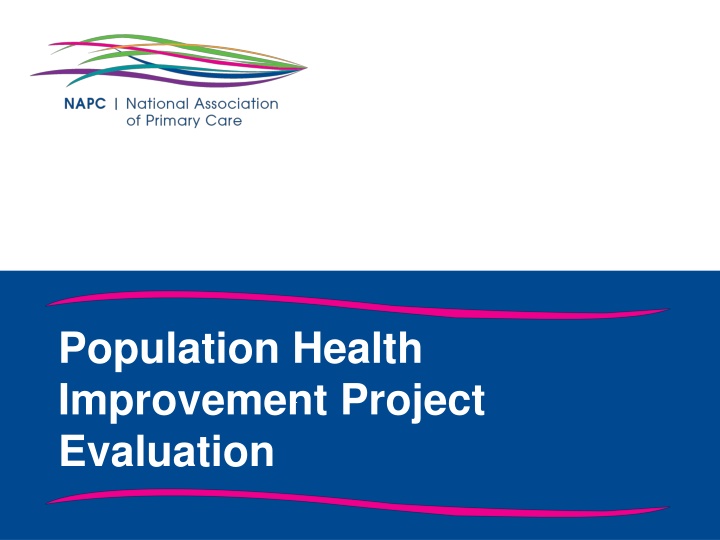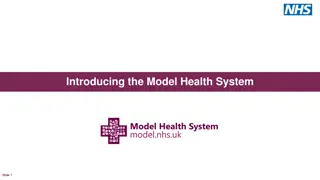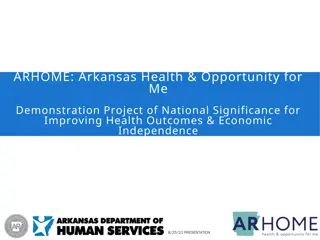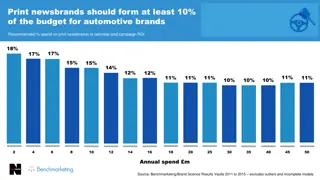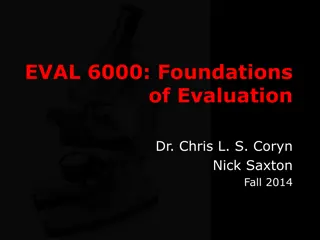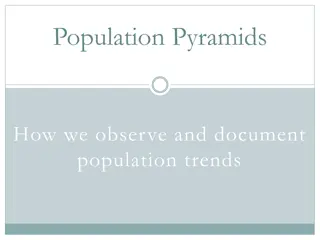Population Health Improvement Project Evaluation - Impact and ROI Analysis
The evaluation of a Population Health Improvement Project focused on identifying and supporting individuals with mild or moderate frailty, anxiety, and high BMI to reduce GP demand. The intervention, led by a Social Prescribing and Care Coordination team, aimed to improve patient activation, wellbeing, and health. The analysis shows a positive impact on patient activation levels, system demand, and a significant return on investment through reduced primary and secondary care demand. Patient testimonials reflect the high quality and effectiveness of the personalized care provided.
Download Presentation

Please find below an Image/Link to download the presentation.
The content on the website is provided AS IS for your information and personal use only. It may not be sold, licensed, or shared on other websites without obtaining consent from the author.If you encounter any issues during the download, it is possible that the publisher has removed the file from their server.
You are allowed to download the files provided on this website for personal or commercial use, subject to the condition that they are used lawfully. All files are the property of their respective owners.
The content on the website is provided AS IS for your information and personal use only. It may not be sold, licensed, or shared on other websites without obtaining consent from the author.
E N D
Presentation Transcript
Population Health Improvement Project Evaluation .
Testing the Value of Prevention What we did Identify: People with mild or moderate frailty, anxiety, living alone or with one other person with high and growing BMI and GP demand Intervene: Proactive, holistic, personalised care offered by the Social Prescribing and Care Coordination team Impact: Aim to improve activation, wellbeing and health while reducing GP demand 30 patients who took up support have been evaluated |
Impact on Patient Activation and System Demand Patients started with an average activation level of 2.1 and this rose to 3 GP Contacts As ability rises, it s only a matter of time before physical health improves and contacts fall Before After A 0.9 point rise in activation is linked to a reduction of 5 GP appointments per patient per year 4 2 1 3 very able a little able not able quite able A 0.9 point rise in activation is linked to primary and secondary care demand savings of 524 per patient per year Patient Activation Level: A person s knowledge, skills and confidence in managing their own health and wellbeing |
The Return on Investment of the Intervention Patients received, on average, 180 minutes of support from a Social Prescriber or Care Coordinator This support may pay for itself 2 times over in reductions in primary care demand and 7 times over in reductions in primary care and secondary care demand This does not count the cost of any onward referrals but it also doesn t count benefit in year 2, benefit to other providers or the benefit of better health to patients Return on Investment (ROI): Do the benefits of an intervention exceed the input costs? |
How Did Patients Feel? You offered me help when I was at my worst and I'll never forget that. The service was caring and understanding - tell your boss it s a 10/10 from me. Thank you for getting me to a better place. You have been very approachable and treated me with a lot of kindness and understanding, thank you following up everything for me. You've been a superstar, it's been a real joy. It was very reassuring to know I had someone there Very impressed as you never let me go You brought out a little bit of the old spark in me I have had the chance to talk about my problems and been linked to services which have been a great help as I would not have through about asking these services for support. It's amazing how you looked at everything, I can't thank you enough, you dug me out of a hole - everything is great about the service. |
Impact of Social Prescribing on Older People GP GP Hospital Admissions Repeat Meds Patients Demand Trend Falls Contacts Patients over 65 who have just started receiving social prescribing support 1 for every 4 patients 1 for every 6 patients 67 24 Rising 8 Patients over 65 who had social prescribing support 1+ year ago 1 for every 7 patients No 36 17 Stable 7 admissions Older people who were supported by social prescribers have fewer admissions, fewer falls and fewer repeat medications. They also had fewer contacts with specialist nurses and had 7 fewer GP contacts last year. |
Testing the Value of Prevention What we did Identify: People with moderate frailty, with 3 or more conditions (falls risk, falls, UTIs, constipation, memory, delirium, dementia, confusion and incontinence) with high and growing GP demand who have not seen a community nurse Intervene: Proactive primary care frailty nursing support, including home visits Impact: Aim to improve activation and stabilise health while reducing GP demand 23 patients who took up support have been evaluated |
Impact on Patient Activation and System Demand Patients started with an average activation level of 2.3 and this rose to 3.4 GP Contacts As ability rises, it s only a matter of time before physical health improves and contacts fall Before After A 1.1 point rise in activation is linked to a reduction of 5 GP appointments per patient per year 4 2 1 3 very able a little able not able quite able Patient Activation Level: A person s knowledge, skills and confidence in managing their own health and wellbeing A 1.1 point rise in activation is linked to primary and secondary care demand savings of 612 per patient per year |
How Did Patients Feel? I know if I needed advise you would be the first port of call. It's very good to know there's help if I need it. Feel the service is useful, you took his memory seriously and got him tests and diagnosis. We know we can ring you if we need you. I think it s brilliant and Faye has been very supportive and helpful. 100% I always have someone to turn to I don't feel on my own At first I thought why do I need this. Good to know there is someone you can contact especially when there are a lot of barriers to accessing GPs. I m extremely likely to recommend this service. It is good to be able to talk to someone regarding personal problems. |
Impact of Early Intervention on Frail Patients GP Community Nurse Contacts GP Hospital Admissions Patients Demand Trend Falls Contacts Patients who have just started receiving support from a frailty nurse 1 for every 5 patients 1 for every 3 patients Over 4 80 25 Rising Patients who have received support from a frailty nurse for 1 year or more 1 for every 43 patients 1 for every 6 patients Less than 2 85 15 Stable Mild and moderately frail people were supported by a general practice frailty nurse, each receiving an average of 4 nurse contacts. These patients had fewer admissions, fewer falls and fewer UTIs. They also had fewer contacts with communitynurses and had 10 fewer GP contacts. |
Why This Matters to Our PCN? Levels of frailty are rising rapidly 3 % of Population Within the next 20 years the number of people over 65 is likely to increase by 40% and the number of people over 80 will increase by 69% 4 5 Quality of life improvements have mitigated the impact of an aging population on frailty services but improvements have stalled due to lifestyle factors like smoking and obesity Frailty in Our PCN Figures in the bars show how much more GP contact these patients have Patients with severe frailty have 5 times more GP contact |
